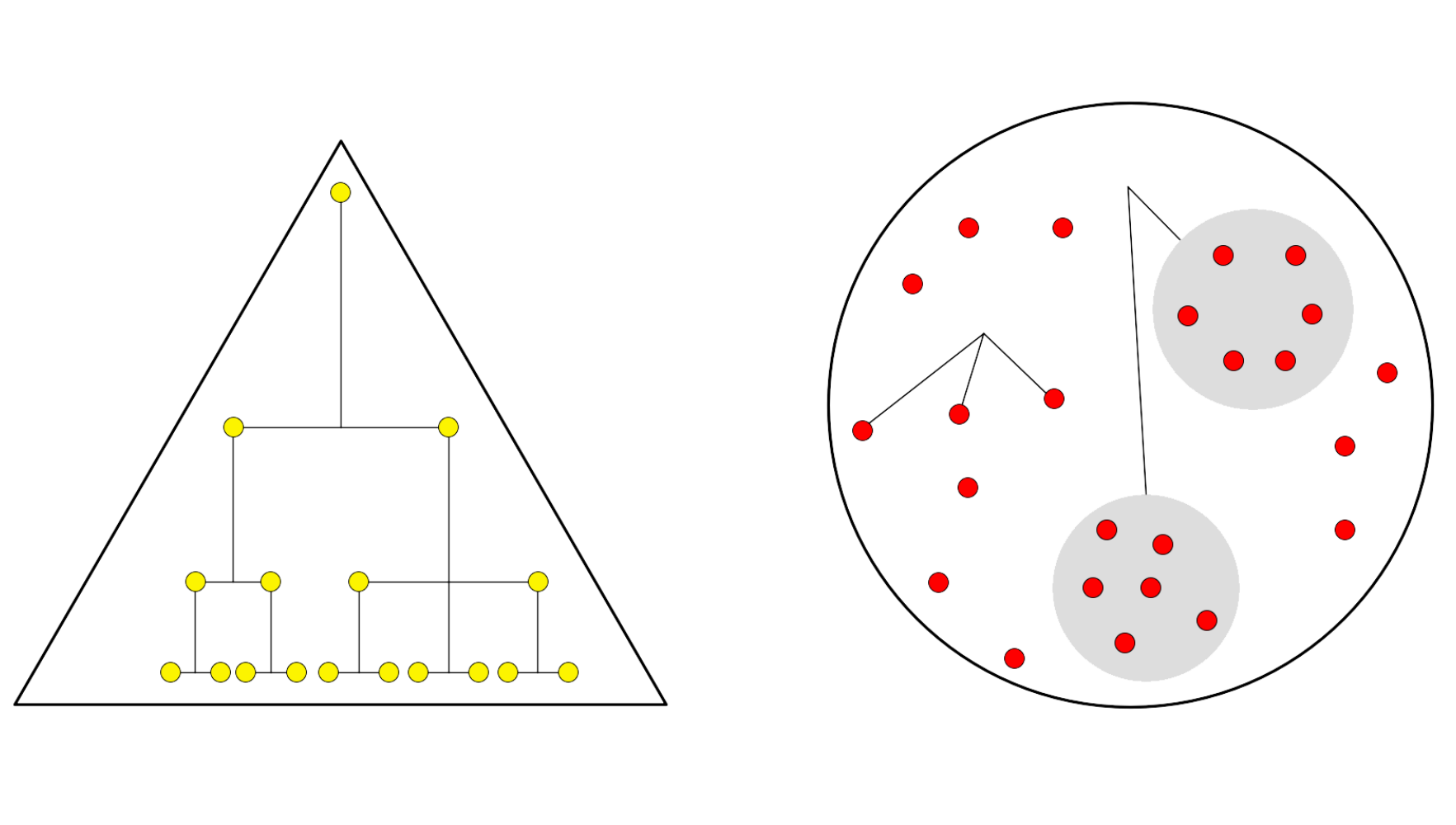Holacracy and holacratic governance: The key concepts of […] project governance in the holacracy environment include circle structure, distributed authority, dynamic governance, and continuous improvement.
Circle structure refers to the way holacracy organizes work into self-governing circles, each with its unique purpose, roles, and accountabilities. These circles operate within a larger, overarching circle structure that governs the entire organization.1
Hierarchy vs. Holacracy

Hierarchy
- Centralized Decision-Making: Authority is concentrated at the top levels of management, with directives passed down the chain of command.
- Clear Chain of Command: A well-defined reporting structure where each employee knows their superiors and subordinates.
- Defined Roles and Responsibilities: Specific job roles and responsibilities are clearly outlined, with accountability to superiors.
- Resource Allocation: Higher management typically decides on resources (money, time, personnel), directly impacting project execution.
- Operational Efficiency: Efficient for routine operations and predictable tasks due to clear roles and streamlined decision-making.
Holacracy
- Decentralized Governance: Governance is distributed across all organizational elements. Circles hold meetings to define collaboration, responsibilities, and decision-making authorities.
- Flexible Structure: Emphasizes development and optimization of the operational structure for smooth workflow, independent of resource constraints.
- Collaborative Environment: Encourages thoughtful nurturing and full development of collaboration methods without being prematurely hindered by resource issues.
- Separate Meetings for Governance and Operations: Governance meetings focus on structural improvements, while operational meetings handle day-to-day activities.
- Adaptability: Holacracy allows for adaptive changes in how teams work together, fostering innovation and responsiveness to changing needs.
Separation of governance and operational decisions
In the holocratic system, governance is distributed across all elements of the organization.
During governance meetings held by each circle, discussions and decisions are made regarding how to collaborate within the circle: responsibilities and decision-making authorities are defined and agreed upon.
The focus here is on the development and optimization of the operational structure: What does the operation need for a smooth workflow? Governance meetings deliberately avoid decisions about resources (money, time, personnel).
Operational meetings, like in many organizations, regulate day-to-day business activities.
A major advantage of this separation is that the manner of collaboration can be thoughtfully nurtured and fully developed without being prematurely hindered by “too little time, no money, no personnel.”
Footnotes
-
Bushuyev et al (2020). Inspirational Project Governance into the Holacracy Environment. ↩
